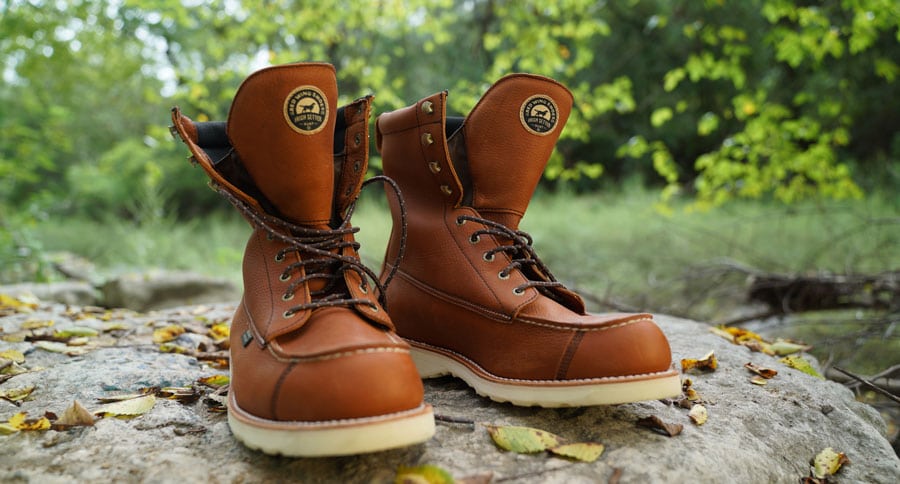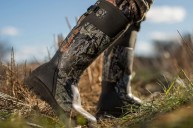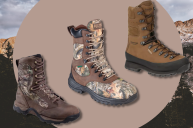Red Wing's storied hunting boots haven't changed much over the years because they don't have to.
I had the privilege of trying out a pair of Irish Setter Wingshooter Style 894 boots, a very popular boot for upland bird hunting. The classic Wingshooter look—reddish leather and white soles—has been around for a long, long time, and I've always wondered how well they perform. Surely these boots have been around so long for a reason, right?
Red Wing Shoes makes a variety of boots, serving hunters, workers and everyday outdoorsmen and women. Red Wing's Irish Setter line serves each of these markets as well, but it started as a hunting boot.
The name itself was inspired by the unique Oro-Russet leather that resembled the color of an Irish Setter hunting dog. Red Wing introduced the first boots, which people simply knew as "Irish Setters," in 1950.
Many variations have come and gone throughout the years, but for the most part, the classic Irish Setter boot has maintained its original look. Advancements have obviously come along to improve comfort and durability, but people still love the classic appearance.

Red Wing Shoes introduced the Style 854 boots in 1950. Irish Setter Boots
But, aside from the timeless style and the rich history, how well do these boots really perform for hunting? Well, they've become a go-to upland boot, so I decided to wait for dove season to take my first crack. While a dove hunt isn't nearly as demanding as a grouse or quail hunt, I figured it'd serve as a good warm-up. We did end up walking more than you normally would on a dove hunt, too, so I got a good idea of the kind of miles I could put on these things.
After a couple days of hunting, I can confidently say these are some of the best boots I've ever hunted in. First off, they don't weigh very much, which is obviously important when the type of hunt demands you never stop walking. Dove season in central Texas doesn't allow many opportunities to see how they stand up against water, but they didn't have any issues with morning dew or sweat.
One complaint I've seen online is a lack of tread, and subsequently a lack of traction. I'll agree there isn't much in the tread department, but I'd see this as a plus, as you won't collect as much mud, keeping your boots nice and light. And, in most of your typical upland environments, you're hunting relatively flat fields, so the need for tread is minimal anyway.
I would definitely recommend going with the 9-inch style over the 7-inch, as having something taller will come handy if you ever step in a bog while chasing grouse or woodcock up north. There's nothing worse than walking miles in a boot that previously filled up with water.
I'd also suggest going without the insulation option unless you aren't planning to hunt with them. For upland purposes, though, there are very few scenarios where you'd want your feet to be that warm. It's far more important to keep them dry.
The biggest thing I took from the Wingshooters, however, is the comfort. It never fails, on just about every upland hunt, I start feeling the blisters coming in at some point. Generally by the last day, I'm dreading putting my boots back on again. However, I'm excited to see how these boots do on a longer, tougher hunt. They almost feel like a big pair of tennis shoes when you walk in them.
Specifications
- Upper: Full-grain, waterproof leather
- Waterproof: UltraDry™
- Insulation: Non-insulated
- Height: 9-inch
- Weight: 4 pounds, 2 ounces
- Lining: Moisture-wicking nylon
- Counter: Heel-molded
- Footdbed: Removable polyurethane
- Shank: Steel
- Outsole: Prairie white
- Construction: Goodyear leather welt
- Last: 325
- Sizes: Narrow, Medium, Wide and Extra Wide options
There's a reason these boots have virtually stayed the same for so long. And, if I had to wager, I'd say they aren't going anywhere any time soon.
NEXT: GUN DOGS: THE TROPHIES OF UPLAND HUNTING
WATCH




